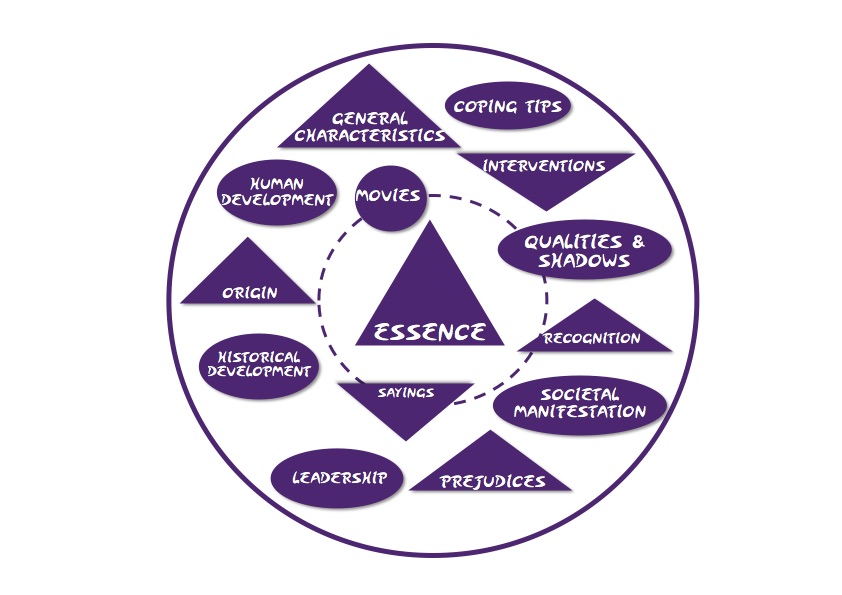Characteristics Purple Value System
On this page, you will, step by step, find the most important characteristics of the Purple value system. Please click on a subject to navigate to the text. The image on the right-hand side of this page is an example of an organization form, which is typical for Purple.
What is the essence of the Purple value system?
Core Values:
Animistic, the Clan, magical.
Paradigm:
Security: “We are safe”
World View:
The world is a mysterious and frightening place and is controlled by mystical spirit beings that need to be satisfied and pleased.
Life motto:
“I sacrifice myself for the sake of the clan and the existential reality”
Life Theme:
To secure the survival of the family.
Life Philosophy:
Seek harmony and safety in a mysterious world within the family clan and/or tribe.
What is the origin of the Purple value system?
Period:
40,000 years ago (rise of the homo sapiens)
Geographical location:
Subtropical areas
Founders:
Homo ergaster (1,9 million years ago)
As a reaction to…:
To survive, people start to naturally work together and bond. Automatic rules of conduct and unspoken manners arise to organize the group’s structure and its leadership to secure the clan’s safety.
What did humans develop when the Purple value system was first activated?
Associative capacities, imagination, speech, social manners.
What are the characteristics of the historical development of Purple?
Energy sources:
Fire and wood
Highlights:
Family clans who live together peacefully
Lowlights:
Incestuous and oppressive family ties
Economics:
Share food and utensils with family members
Religion:
Placate natural spirits and honoring deceased ancestors, superstition.
Cultural Theme:
Rites, rituals, traditions, stories, symbols and magical imagery.
Art Forms:
Prehistorical art (rock-drawings, first jugs, jars and pots, etc.)
Leaders:
Fixed family roles, father, head of the family.
Invention:
Religious artifacts (totems), many utensils made of flint (arrowheads, hand-ax), wood (kanos, spears, bow and arrow), skins (clothes, footwear, shelters) and clay (pots).
Modernization:
Religions, art, culture, bury and/or burn deceased, taking care of the disabled, and use of salt.
What are displays of Purple as the dominant value system in our society?
Community forms:
Organized in clans, families and close-knit communities
Communities:
Strong family bonds in Polynesia, Papua New Guinea, along the Amazon area and Sub-Saharan Africa
In the Netherlands:
Roma and Sinti
Movements/influences:
Family as the cornerstone of society, We the Dutch, royal family, folklore.
What are the general characteristics of the Purple value system?
- Magical, superstitious, unconditional acceptance by family members
- Blood relationships are center stage
- Loyalty to elders and ancestors
- Within the clan a natural order exists
- Clan members willing to sacrifice themselves
- “In-group” versus “out-group”
- Placate and communicate with mystical spirits
- Superstitions and depending on omens
- Existential identity (“This is what we are here for.”)
- Emotional connection (a sense of family) of people and the organization
- Ensures safety and trust
- Stimulates emotional and intuitive thinking and acting
How do you recognize the presence of Purple?
For example at the office; the connections between people, the amount of (family) pictures and personal belongings on office desks, conversations behind closed doors (in and out-groups) and at the coffee machine, traditions and rituals, A strong in-group feeling which will cause people to be a bit expectant and not speak up so quickly. The leader will step into the limelight in a natural way.
How do you recognize the absence of Purple?
No connection between people, no shared set of values, fast-changing structures and the freedom to do as one pleases without emotional bonding and consequences. No rituals or history to revert to. Little acknowledgement for natural order in terms of roles. In organizations, this may manifest as “cold” or “chilly” on the work floor.
How to deal with the Purple value system?
Connect on a personal level from a shared set of values and norms (We). Act from humbleness; refer to traditions and events from the past. Discover the unwritten rules; these are all defining for everything that happens. Respect the way things are done. (“This is how we do things around here.”).
What are positive stimuli for Purple?
Organize in tribes; activities that create a connection without a business interest.
Build traditions, introduce and keep rituals. Honor the ancestors, founders, etc. Pay attention to family (personal) related issues amongst colleagues. Tell stories about the early days.
What are negative stimuli for Purple?
Wanting to change everything, ignore the establishment and not showing respect for the past. Not using the overall developmental line and traditions.
Essentially, Purple is not good or bad. Purple exists. And we distinguish healthy and unhealthy manifestations of Purple.
What are healthy manifestations of Purple?
Peace. Natural. Grounded. Safe. Discrete. Emotional. Creates trust. The relational connection is based on what happened in the past, which gives trust for the future. A very clear and deep understanding about who we are and what needs to be done.
What are unhealthy manifestations of Purple?
Closed. Evasive. Fearful. Conservative. Stick together in close groups and gossip.
Keep everything within the boundaries of the community. The like knows like mentality is outplayed at the cost of the organization or the system. Secure wayside shrines. Continuously creating an in-group and an out-group feeling.
Which prejudices may other value systems have about Purple?
- Red may experience Purple as suffocating, dependent and weak. Purple doesn’t want to change anything and wants to remain everything as it is. Purple will naturally be subordinate to the leader (“pater familias”).
- Blue may experience Purple as incoherent and too emotional. Purple has useless rituals, incomprehensive magic and a lack of organization.
- Orange may experience Purple as over-excessively fond of the family and archaic. Purple doesn’t have an own identity and is underperforming.
- Green may experience Purple as old-fashioned and primitive. Purple is also exclusive, because it continuously acts on “We” versus “ Them”.
- Yellow may experience Purple as fixed, immovable and not willing to accept new ideas.
What are typical Purple leadership characteristics?
- Offer grounding and safety. Can connect people and create strong bonds.
- Makes sure that “ being a part of an organization/department” really means something.
- Acknowledges and understands traditions and historical values.
- Is able to create strong commitment and gives people the feeling to work together for a “Holy Mission”.
What are appropriate interventions when dealing with individuals or groups in Purple?
Teamwork
Teamwork needs to organize in a nearly organic way. The team structure is natural. Everyone fulfills the role that fits him or her naturally. Team members need to intuitively understand each other so that words are barely needed to work together.
Gaining trust
SAct humbly. Respect of all that is and was. Pay attention to the emotional (personal and/or family) bonds between people. Put “We” before “I” and show that you are willing to sacrifice yourself in the group’s interest.
Confronting
Say what needs to be said, outspoken, without a strategy or double meaning. Confront in relationship with what is means for the group’s safety and existence. It’s helpful to use an elder who is accepted by the group (on family grounds) to foster trust and safety. It’s advisable to bring into action the group’s natural leaders. Attention: Purple has the tendency to avoid confrontations, especially when this undermines the group’s interest. Be aware that confrontations will mostly occur in the personal sphere (such as in families). To be appreciative on a personal title, breakthroughs can be achieved.
When you find it difficult to relate positively to the Purple value system, please read the proverbial phrases below to experience the general accepted wisdom of Purple.
- Home, sweet home
- Trust is hard to gain but easy to lose
- A friend in need is a friend indeed
- A good friend is my nearest relation
- You make more speed with less haste
- Speech is silver, silence is golden
- There’s no place like home
- Home is where the heart is
- Blood is thicker than water
- When in Rome, do as the Romans do



